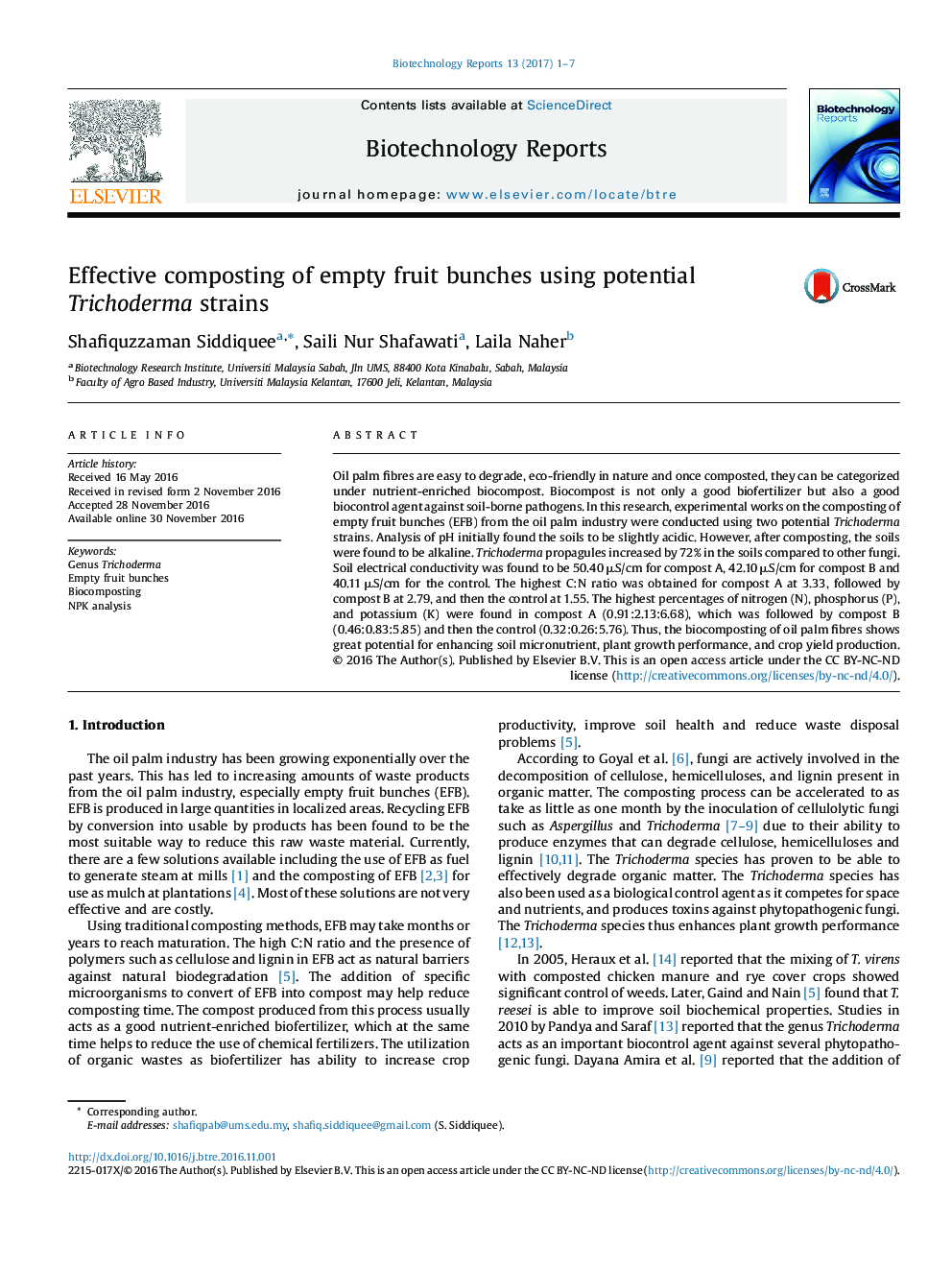| Article ID | Journal | Published Year | Pages | File Type |
|---|---|---|---|---|
| 5031790 | Biotechnology Reports | 2017 | 7 Pages |
â¢Biocompost is not only a good biofertilizer but also a good biocontrol agent against pant pathogenic fungi.â¢Best solution for acidic soils.â¢Balance the biological flora in soil.â¢High C:N value.
Oil palm fibres are easy to degrade, eco-friendly in nature and once composted, they can be categorized under nutrient-enriched biocompost. Biocompost is not only a good biofertilizer but also a good biocontrol agent against soil-borne pathogens. In this research, experimental works on the composting of empty fruit bunches (EFB) from the oil palm industry were conducted using two potential Trichoderma strains. Analysis of pH initially found the soils to be slightly acidic. However, after composting, the soils were found to be alkaline. Trichoderma propagules increased by 72% in the soils compared to other fungi. Soil electrical conductivity was found to be 50.40 μS/cm for compost A, 42.10 μS/cm for compost B and 40.11 μS/cm for the control. The highest C:N ratio was obtained for compost A at 3.33, followed by compost B at 2.79, and then the control at 1.55. The highest percentages of nitrogen (N), phosphorus (P), and potassium (K) were found in compost A (0.91:2.13:6.68), which was followed by compost B (0.46:0.83:5.85) and then the control (0.32:0.26:5.76). Thus, the biocomposting of oil palm fibres shows great potential for enhancing soil micronutrient, plant growth performance, and crop yield production.
